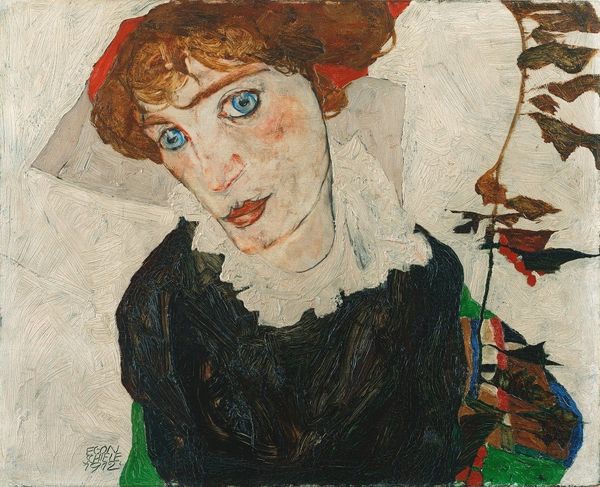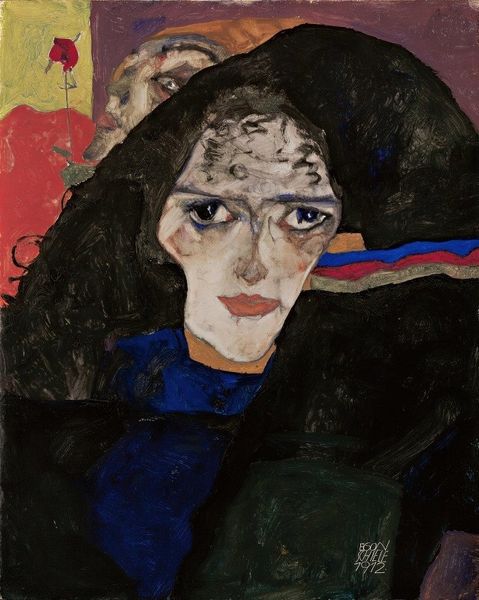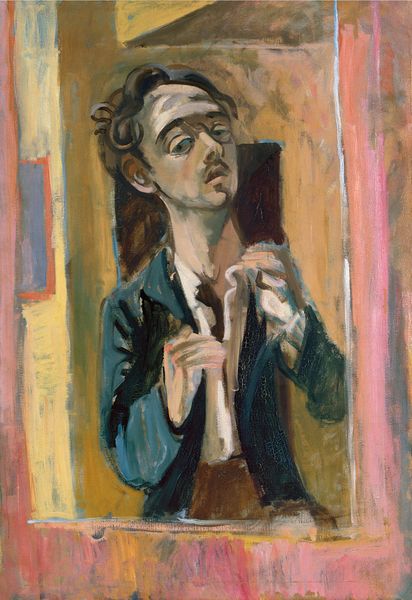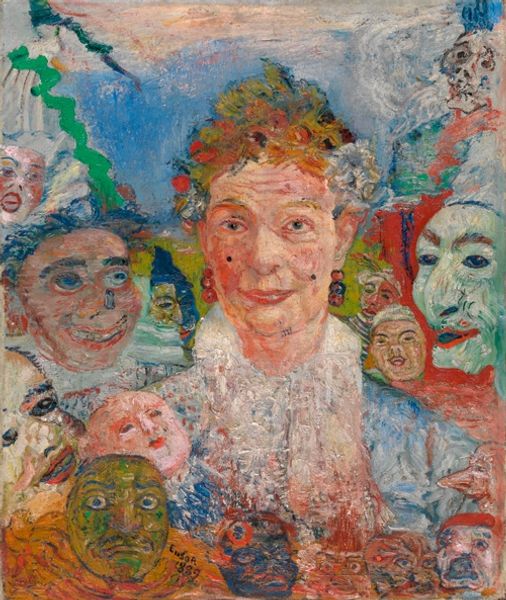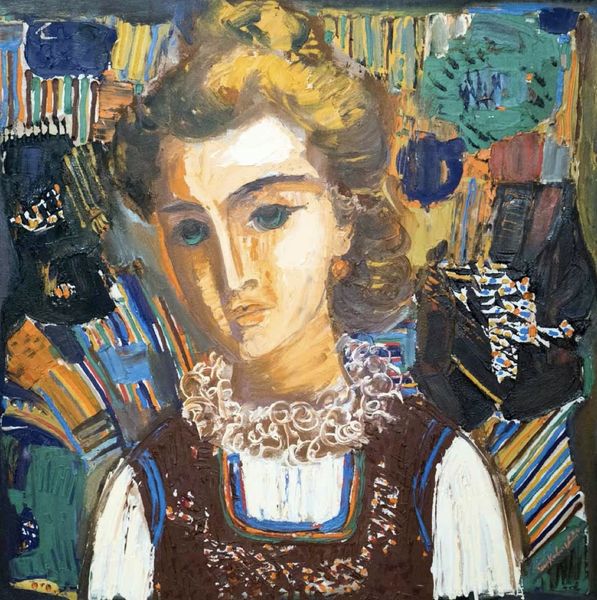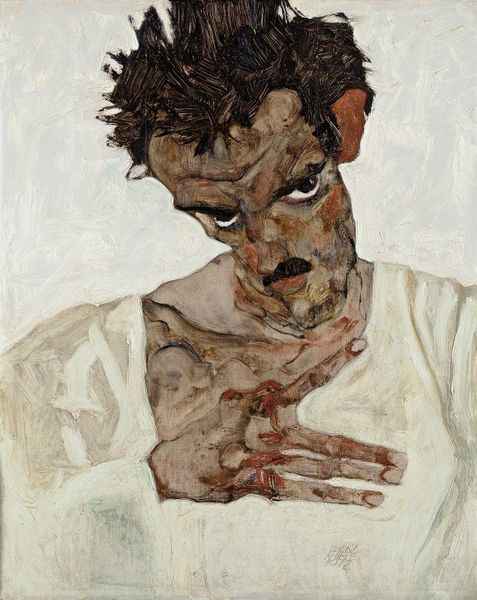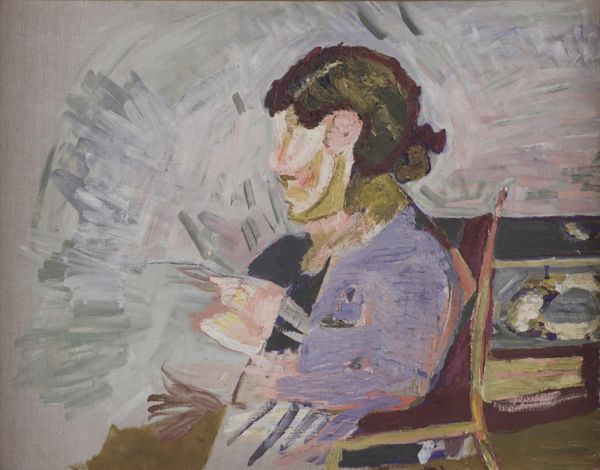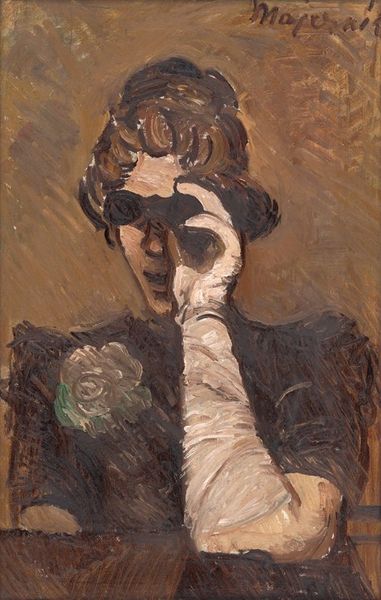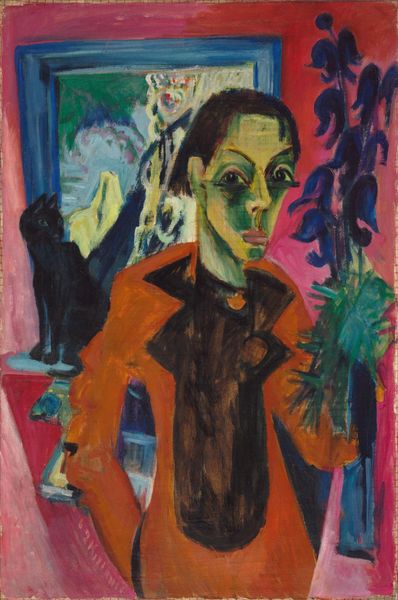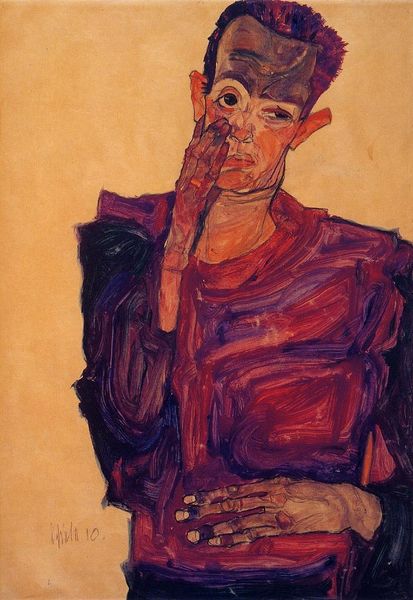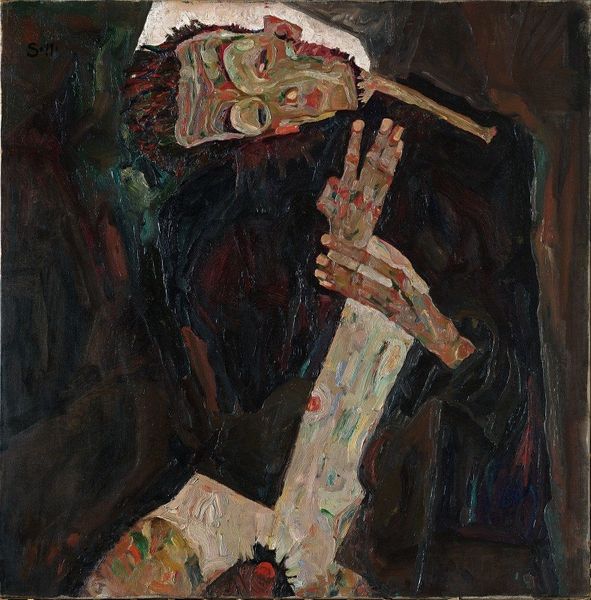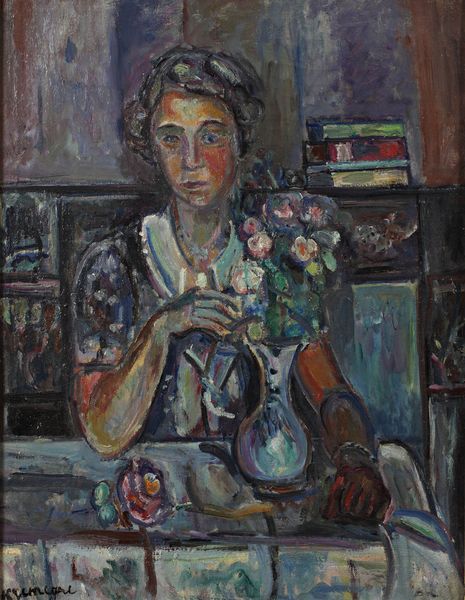
painting, oil-paint
#
portrait
#
figurative
#
self-portrait
#
vienna-secession
#
painting
#
oil-paint
#
figuration
#
oil painting
#
expressionism
#
portrait art
Copyright: Public Domain: Artvee
Curator: Welcome. We’re standing before Egon Schiele's “Selbstbildnis,” or “Self-Portrait,” completed in 1911. Schiele was a prominent figure in the Austrian Expressionist movement, linked to the Vienna Secession, and this painting is rendered in oil paint. Editor: My first impression? Haunting! It feels like Schiele is trying to claw his way out of the canvas, or maybe, out of himself. Those colours feel acidic, especially that strange, green cast around his mouth. What is going on? Curator: Well, it's important to note that self-portraiture became a significant motif for Schiele, a vehicle through which he interrogated his identity. This was a period of significant social and political upheaval in Vienna. His intensely vulnerable and often stark portrayals can be seen as reflections of a broader societal anxiety. Consider his engagement with the changing sexual landscape of the time and the emerging discourses around psychoanalysis. Editor: Okay, 'broader societal anxiety' sounds spot on, but with an added dollop of personal angst, don't you think? I mean, look at those eyes – wide, almost desperate. And the way he contorts his fingers. There's nothing relaxed or posed about this; it's a raw nerve laid bare. It feels so deliberately theatrical, too, like he’s performing himself in a mirror. Curator: Absolutely. The performative aspect of identity is crucial here. He wasn’t just capturing his likeness; he was actively constructing a persona, grappling with themes of sexuality, mortality, and artistic identity within the strictures of early 20th-century society. The colour palette – muted yet jarring – accentuates the emotional intensity, but from a point of historical contextualisation, also references how painting aesthetics where responding to a time of vast technological change. Editor: True, but those limbs! So elongated and bony. It's like he’s deliberately exaggerating a kind of… decay, I guess? As a performer he needs his audience, maybe as someone to pity him. Curator: Schiele's distortion of the human form shouldn't be viewed solely through a lens of morbidity, I feel. Instead, examine it in dialogue with the era’s broader anxieties, a way to express a very specific crisis that art history must place in the context of art's relationship with science, and changing socio-political conditions. Editor: So, it’s not just one tormented artist wailing into the void, but more of a canary in the coal mine, warning of… well, everything falling apart? Curator: Precisely! Thank you, in helping listeners place the anxieties within. Editor: It’s a real pleasure. As ever. Thanks to your expertise I think I have started to find some kind of beauty in all of this, in Schiele’s brutal honesty.
Comments
No comments
Be the first to comment and join the conversation on the ultimate creative platform.
